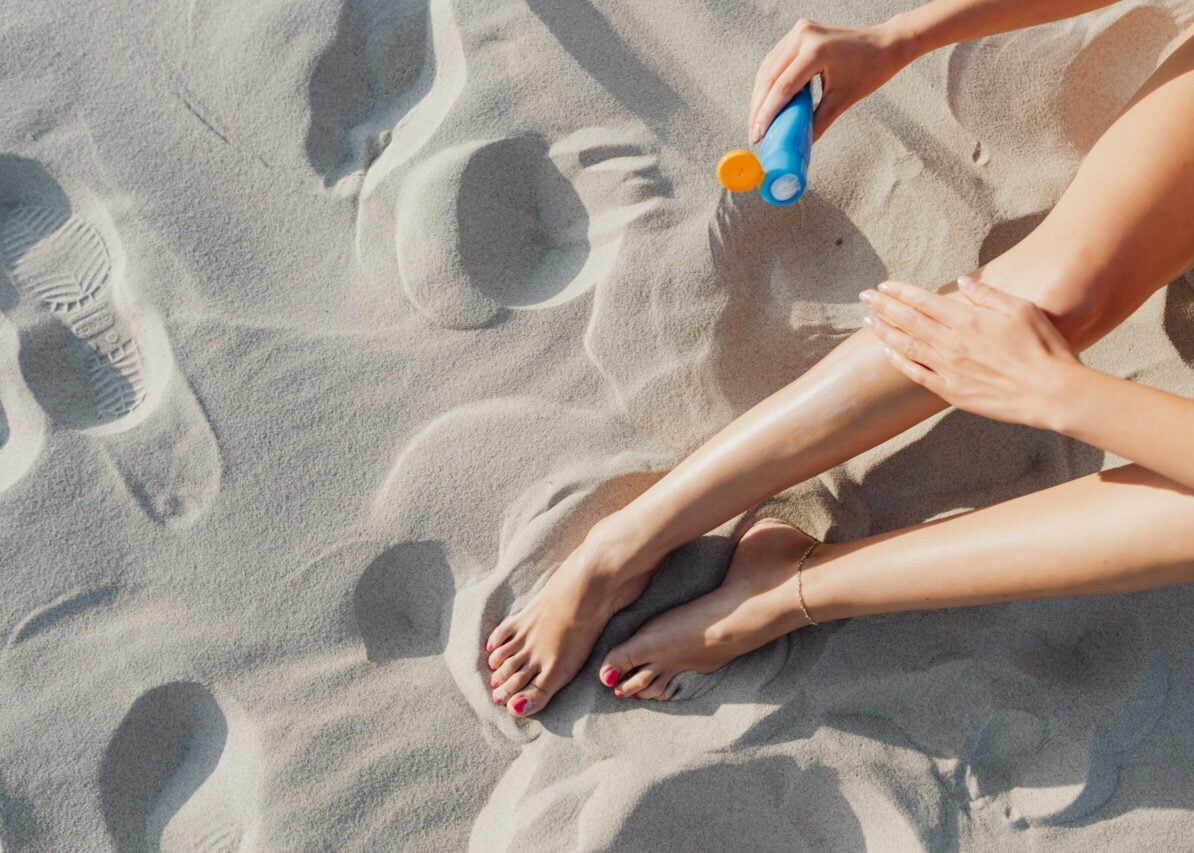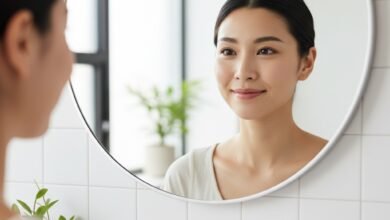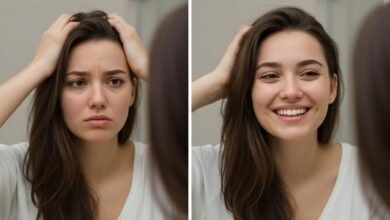Protecting Your Skin from UV Rays: A Complete Step-by-Step Guide for Healthy & Youthful Skin

Have you ever felt your skin dull, noticed dark spots appearing, or even fine lines forming faster than they should? Amidst the unpredictable climate changes in Indonesia, sometimes with scorching heat, the risk of skin damage from ultraviolet (UV) rays is increasingly high. The problem is, many of us don’t fully understand how serious this invisible threat truly is.
UV rays don’t just cause temporary sunburn or tanning. Continuous exposure, even on cloudy days or indoors near a window, can trigger premature aging, damage collagen and elastin, cause stubborn dark spots, and even increase the risk of dangerous skin cancer. This cumulative damage often starts from a young age, when we neglect protection, and its effects only become visible later in life. You certainly wouldn’t want your time and money invested in skincare to go to waste, would you?
Don’t worry! SalwaSalon.com is here to guide you. This article will be a practical and in-depth step-by-step guide, ensuring you have the best shield against the dangers of UV rays. By following this tutorial, you will build effective skin protection habits, keeping your skin healthy, bright, and youthful. Let’s get started!
Why is UV Protection So Crucial for Your Skin?
Before we move on to the practical tutorial, let’s first understand why UV protection is the cornerstone of every effective skincare routine.
Recognizing the Invisible Enemy: UVA, UVB, and Long-Term Risks
The sun emits two main types of UV rays that affect our skin:
- UVA (Ultraviolet A): This ray is the primary trigger for premature aging. UVA can penetrate deep into the skin layers, damaging collagen and elastin cells, which leads to wrinkles, fine lines, and sagging skin. UVA rays also trigger the formation of free radicals and contribute to dark spots and the risk of skin cancer.
- UVB (Ultraviolet B): This ray is the main cause of sunburn and plays a significant role in causing most types of skin cancer. UVB intensity tends to be higher during the day, especially between 10 AM and 4 PM.
Both work synergistically to damage skin cell DNA, which can lead to serious long-term problems. Protecting yourself from both types of rays is crucial.
Step #1: Choose the Right Sunscreen – Your Primary Defense
Choosing the right sunscreen is the first and most vital step. With so many options on the market, we’ll help you navigate.
Understanding Labels: SPF, PA, and “Broad-Spectrum”
When choosing a sunscreen, pay attention to these three important indicators:
- SPF (Sun Protection Factor): Indicates the level of protection against UVB rays. We highly recommend a minimum of SPF 30 for daily use, and SPF 50 if you spend a lot of time outdoors.
- PA (Protection Grade of UVA): Indicates the level of protection against UVA rays, denoted by plus signs (+). The more plus signs (e.g., PA+++ or PA++++), the higher the UVA protection.
- Broad-Spectrum: Ensure your sunscreen has a “Broad-Spectrum” label. This means the product protects against both UVA and UVB simultaneously. This is the best choice for comprehensive protection.
Mineral vs. Chemical: Which is Best for Your Skin?
There are two main types of sunscreen, each with a different mechanism of action:
- Mineral (Physical) Sunscreen: Contains Zinc Oxide and/or Titanium Dioxide. These ingredients work by forming a physical barrier on top of the skin that reflects UV rays.
- Pros: Tends to be gentler for sensitive skin, non-comedogenic (does not clog pores), and provides instant protection upon application. Suitable for acne-prone skin, pregnant women, and children.
- Cons: Can sometimes leave a “white cast” on the skin, although many modern formulations are increasingly lighter.
- Chemical Sunscreen: Contains ingredients like Avobenzone, Oxybenzone, Octinoxate, etc. These ingredients absorb UV rays and convert them into heat that is then released from the skin.
- Pros: Generally has a lighter texture, absorbs easily, and does not leave a white cast.
- Cons: Some people may experience irritation or allergies, and protection only becomes active approximately 20-30 minutes after application.
Our Tip: If you have sensitive or acne-prone skin, we recommend trying a mineral sunscreen. For specific product recommendations available at Salwa Salon, don’t hesitate to consult directly with our beauty experts!
Choose a Formula According to Your Skin Type
- Dry Skin: Look for a hydrating cream formula.
- Oily/Acne-Prone Skin: Choose a gel, fluid, or lotion formula that is non-comedogenic (does not clog pores) and has a matte finish.
- Normal Skin: You are free to choose, but ensure the texture is comfortable on your skin.
Step #2: Correct Sunscreen Application – More Than Just Spreading It On
Already chosen your sunscreen? Now it’s time to apply it correctly for maximum effectiveness.
When and How Much? (The “Two-Finger Rule”)
- Application Time: Use sunscreen every morning as the last step in your skincare routine, 30 minutes before sun exposure. This allows the product to absorb and form optimal protection, especially for chemical sunscreens.
- Amount of Application: For your face and neck, use the “two-finger rule.” Squeeze sunscreen along your index and middle fingers, then apply it all over your face and neck. This is a sufficient amount to provide protection according to the stated SPF.
The Correct Order in Your Skincare Routine
Sunscreen should always be the last step in your skincare, before makeup. The correct order is:
- Cleanser → Toner → Serum → Moisturizer → SUNSCREEN → Makeup (if any)
Don’t Forget These Areas!
Often we only focus on the face, but there are several other areas that are frequently missed and vulnerable to UV damage:
- Ears
- Neck (front and back)
- Upper chest (décolletage)
- Back of hands
- Exposed legs and arms (if not covered by clothing)
Remember, every part of your skin exposed to the sun needs protection!
Step #3: Reapplication Is Key – Keep Your Shield Strong All Day Long
This is the most often forgotten step, yet it’s as important as the initial application. Sunscreen does not last all day.
How Often to Reapply?
For optimal protection, you should reapply sunscreen every 2-3 hours, especially if you are:
- Active outdoors.
- Sweating (during exercise, hot weather).
- Swimming or getting wet.
- Wiping your face with a towel or tissue.
Even if you are indoors all day but near a window, reapplication is still recommended, at least once during the day.
How to Reapply Without Ruining Makeup
Confused about how to reapply if you’re wearing makeup? We have a few tricks:
- Sunscreen Spray: Choose a lightweight, non-aerosol one. Spray evenly from a distance of about 15-20 cm.
- Powder Sunscreen: A pressed or loose powder form that contains SPF. You can apply it over makeup using a brush.
- Cushion Sunscreen: Some brands now offer cushions that are not only for makeup but also contain high SPF.
- Beauty Sponge: If you want to reapply cream sunscreen, lightly dab it over your makeup using a damp sponge with a pressing, not dragging, motion.
Step #4: Additional Defense – Optimize Your Skin Protection
Sunscreen is the foundation, but there are several other strategies you can implement for maximum protection.
Befriend Shade and Avoid Peak Sun Hours
This is the simplest protection method. Try to avoid direct sun exposure, especially during peak hours, which are between 10 AM and 4 PM. Seek shade under trees, umbrellas, or buildings.
Protective Clothing: Hats, Glasses, and Long Sleeves
Clothing is your best physical shield:
- Wide-brimmed Hat: Protect your face, neck, and ears.
- UV-Protective Sunglasses: Shield the delicate eye area from wrinkles and the risk of cataracts.
- Long-sleeved Shirts/Long Pants: If possible, wear clothing that covers your skin when active outdoors. Some apparel even comes with a special UPF (Ultraviolet Protection Factor) rating.
After-Sun Care (Optional but Recommended)
After a day of sun exposure, especially if you feel your skin is slightly red or warm, implement post-sun care:
- Use soothing gels containing aloe vera or cucumber extract to calm the skin.
- Apply a moisturizer rich in antioxidants to help the skin recover and fight free radicals.
Conclusion: The Most Important Investment for Long-Term Healthy Skin
Protecting your skin from UV rays is not an option; it’s a necessity. It’s a long-term investment in your skin’s health, preventing premature aging, dark spots, and the risk of serious diseases.
By following this step-by-step guide, you will not only maintain your skin’s pristine appearance but also preserve your overall health. Consistency is key! Make UV protection an inseparable daily habit from your routine.
If you are still struggling to choose the right products or wish to get personalized skincare recommendations, Salwa Salon’s team of beauty experts is ready to assist. We offer free consultations to help you find the best solutions for your skin’s needs. Visit SalwaSalon.com or contact us for an appointment!
For a more in-depth guide on holistic skincare and anti-aging strategies, you can also explore our exclusive Ebook containing healthy skin secrets from Salwa Salon’s experts.






